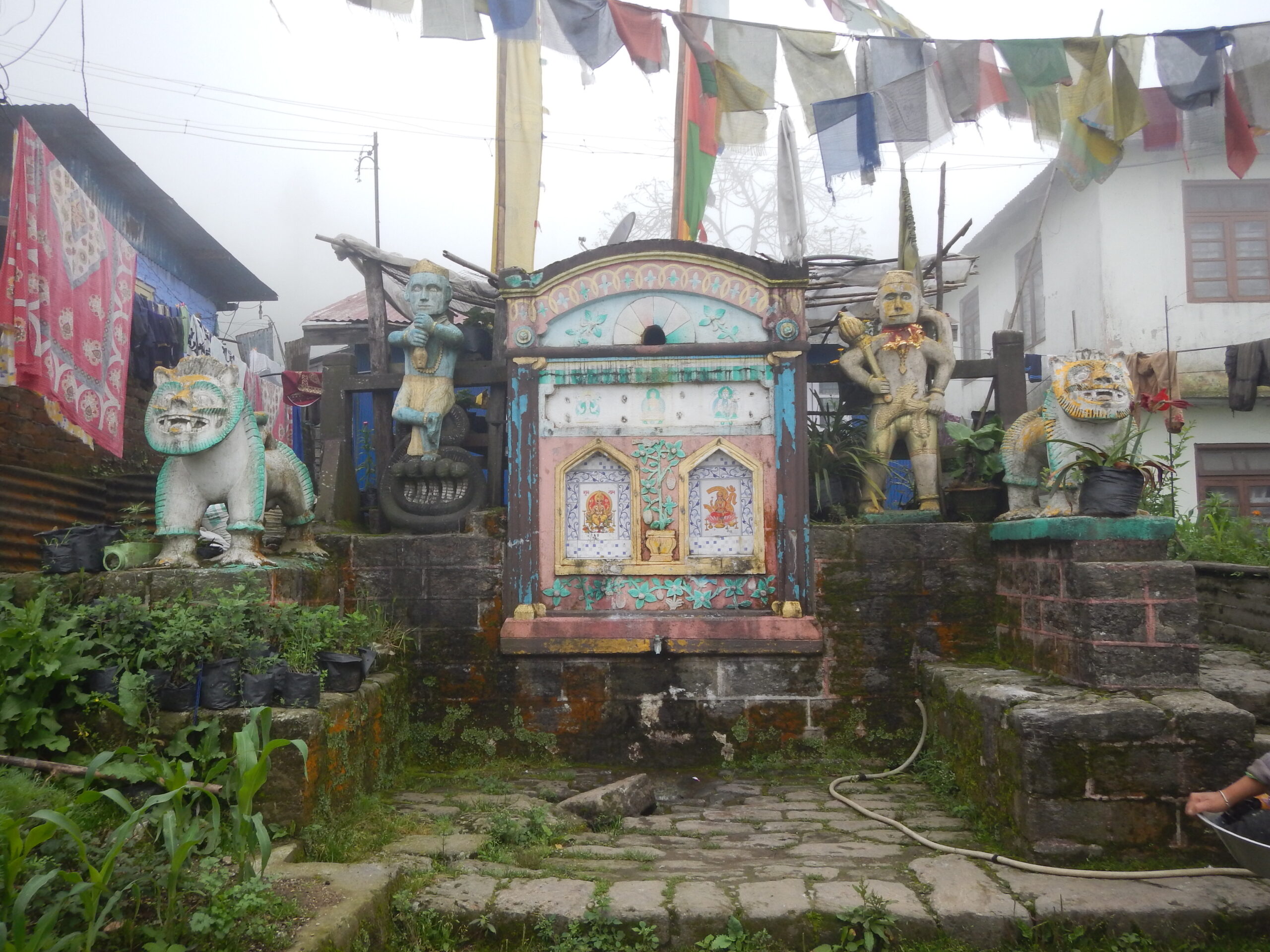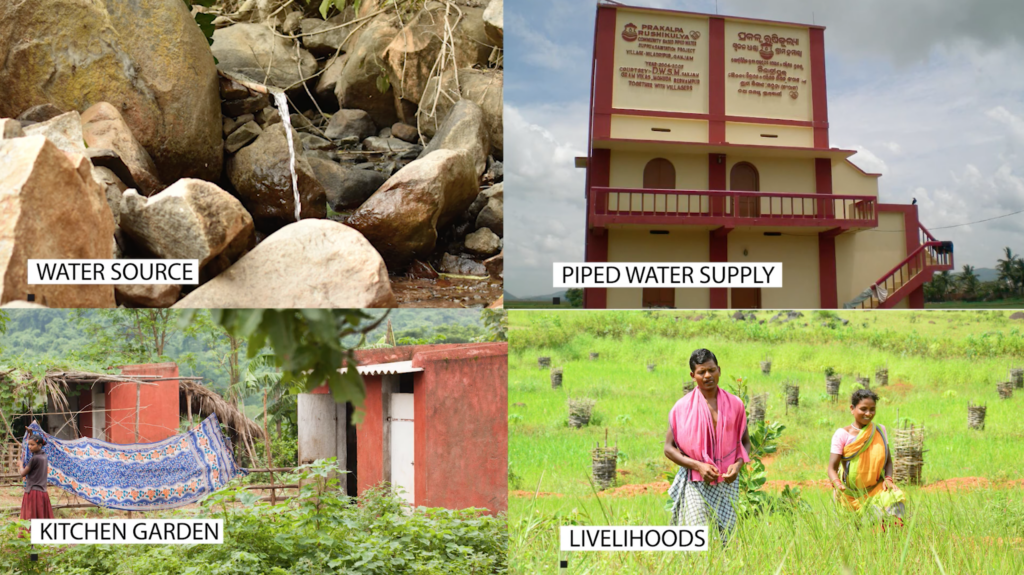Springs: Policy Changes and Sustainability
Groundwater, surface water, and the forgotten link of India’s springs
Springs are groundwater sources that at the national level have found their space in policy and reports only in 2018-2019. “Making the invisible visible,” stated the World Water Day agenda of 2022, in the context of groundwater, which had been considered an entity separate from surface water with no interaction between the two.
Researchers on hydrology and water studies has been voicing this interlinkage and the need to see the effects of one on the other. The level of segregation can be seen in the Indian context where there are different departments for surface and groundwater, such as the Central Water Commission and Central Ground Water Board respectively.
In this essay, I want to move a step further to talk about springs – a groundwater resource that has been rendered invisible in the context of groundwater studies, related policies, and schemes. Considering that mountains and hills are marginalized geographies of the country, their invisibility becomes more pronounced.
Considering that mountains and hills are marginalized geographies of the country, their invisibility becomes more pronounced.
The Himalaya, Western Ghats, Eastern Ghats, Aravalli and others make up the mountain and hill landscape in India. The Himalayan region stretches across 13 states and union territories – Jammu and Kashmir, Ladakh, Uttarakhand, Himachal Pradesh, Arunachal Pradesh, Manipur, Meghalaya, Mizoram, Nagaland, Sikkim, Tripura, Assam, and West Bengal. Out of these, Assam and West Bengal are partial hill states.
The importance of springs for mountain communities
In India, around 200 million people (15% of the population) depend on springs across mountainous landscapes with the Himalaya being the largest springscape. Communities visit the springs to fetch water or draw water from them using pipes into their households and use it for irrigation. Formal water providers across urban and rural areas also use spring water to harness water for supply.
Additionally, informal suppliers such as private vendors, water tankers, and porters all collect water from the springs. Communities are dependent upon springs because they are free, ever available, and accessible.
The weaker socio-economic strata with no springs in their vicinity end up paying more in terms of their absolute, as well as proportion of, income. Many rented houses do not come with water supply hence public springs become their only source of water. These groups largely comprise college students or parent-student pairs who come to pursue education in the urban mountain settlements.
In India, around 200 million people (15% of the population) depend on springs across mountainous landscapes with the Himalaya being the largest springscape.
They divide their time between water collection and college. With almost the entire population dependent on springs, any changes in the number of springs, their discharge, and quality of water could render many areas uninhabitable. The collapse of the spring systems could have unprecedented impact.
Springs emerge when the water table of an unconfined aquifer intersects with the ground surface. These aquifers store groundwater, and defined by their hydrogeology, springs can be of different kinds – contact, karst, depression, fracture, or fault. Unlike extraction via tubewells, borewells, and wells in the plains of India, springs do not require extraction in the mountainous regions.
The changing landscape of springs in India
Groundwater recharges need to take place for the aquifer to sustain and provide water in return. Spring discharge is a function of the rainfall patterns, vegetation of the recharge area, slope and geology of the catchment area, and the storativity and transmissivity of the feeding aquifers. Spring water can have extremely low or high temperatures with varying discharge throughout the year and also across the day.




Since springs are subsurface natural resources, the laws governing them are attached to that of land ownership. According to the Easement Act 1882, anything that lies below one’s land belongs to them, what makes groundwater a private resource when the land is private. One could argue that this law also makes it difficult to implement rules and policies regarding the overexploitation of groundwater.
Springs in most cases are free to access. Community-based organizations take up the mantle of management, creating rules such as imposing restrictions during the dry season, barring access to people from outside the community, and setting timings and limits on water access.
Springs are changing. Their numbers are declining, discharge decreasing, quality deteriorating, and people’s perceptions towards springs are also changing. This increasing divide could be a reason springs become less cared for and ultimately vanish.
Springs are changing. Their numbers are declining, discharge decreasing, quality deteriorating, and people’s perceptions towards springs are also changing.
There are instances of springs disappearing during some seasons (turning ephemeral) or disappearing entirely. In 2019, one of the biggest and most popular springs, Kholi Ghar in Darjeeling, dried up completely for the first time in the living memory of the communities. Disappearance happens also due to privatization by households close to the springs.
Changes in water quality are significant during the monsoons when water turns murky. Studies on water quality have shown microbial contaminants too. Communities believe that spring water is the purest, using it for ritualistic and religious practices. This perspective acts as soft protection since it prevents people from polluting the springs.
Infrastructure development on the last remaining green patches which act as spring recharge areas could have drastic and uncertain impacts and with the change in demography and patterns of consumption, communities use laborers to fetch water from springs or draw water using pipes which are sometimes administered by a complex distribution system run by private vendors. The private sector dependence is growing with skyrocketing prices where the annual fee for a formal connection is the same as the monthly fee for a private connection.

For example, in Darjeeling town the annual water fee of the formal municipality supply is 500 Rupees, whereas a household must spend between 600–3,00,000 Rupees (median of 3600 Rupees) on an informal private water supplier. With water turning non-potable, communities in these locations are turning to bottled water!
Efforts to revive and protect springs
Springs have been studied extensively by all disciplines but a recognition of the changes they underwent in this climate was brought to the forefront as cases for national and international level concern by the Niti Aayog Report (“Report of Working Group I: Inventory and Revival of Springs in the Himalayas for Water Security” and the Hindu Kush Himalayan Assessment published in 2018.
The Dhara Vikas Yojana (Springshed Development) was implemented primarily in rural areas to protect springs and their recharge zones in Sikkim. The springshed development model used in this project aimed to recharge groundwater and sustain spring water sources by reducing surface runoff and enabling more rainwater infiltration in the recharge areas that feed the springs.
The beneficial result it has shown has pushed for its implementation in other mountainous regions of the country. This method, also seen as a climate adaptation strategy, added scientific evidence and formalized a practice that the communities had been carrying out in some capacity in ingenious ways.
The compactness of urban settlements combined with lack of awareness of the extent of aquifers act as obstacles to the protection of spring recharge hotspots in urban spaces.
This is a difference between rural and urban settlements, where the former has spaces with more vegetation and less concrete than the latter. Urban areas with low water availability do not have any initiatives in place. The compactness of urban settlements combined with lack of awareness of the extent of aquifers act as obstacles to the protection of spring recharge hotspots in urban spaces.
The call for national and local action
West Bengal is a state with some parts in the Himalayas but the reports from the Central Ground Water Board rarely mention springs. Even the National Sample Survey Office (NSSO) 69th Round on Water and Sanitation said wells were the primary source of water in the Darjeeling district. One must bear in mind that national level surveys such as the NSSO provide sufficient descriptions at an aggregate level up to the state.
As we go lower, their results need to be corroborated with ground realities. National, and even state-level, policies and schemes are yet to incorporate wide-scaled protection and rejuvenation of springs across rural, urban, and forested areas in the mountains.
Due to the lack of state-led initiatives for the management and protection of springs, most work is done by community-based organizations.
Studies on springs have taken place in disciplinary silos. Support for holistic understanding of springs spanning biophysical, law, policy, and implementation is required through integrated research methods. Implementation of established methods for conservation of springs needs to be location-specific pilot implementation.
Due to the lack of state-led initiatives for the management and protection of springs, most work is done by community-based organizations such as Samaj, Water Protection Committees and others.

Their work is commendable, but only the state can handle the scaling up of spring-level protection initiatives to incorporate springshed-level conservation. In places where the drudgery related to water collection, acquisition, and low levels of water consumption already exists, the lack of state support adds additional pressure on the communities to fend for themselves and preserve the little they have.
It is time that springs became a concern for all the nations dependent upon the mountains across the world.
